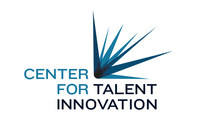 New Study Reveals the Hard Numbers by Industry, Race, and Gender
New Study Reveals the Hard Numbers by Industry, Race, and Gender
The #MeToo movement brought awareness and conversation to one of the most urgent issues facing the workplace today, but not enough data has been available to point to the causes or solutions until now. A new study, “What #MeToo Means for Corporate America,” conducted by the Center for Talent Innovation (CTI), is the first of its kind to measure the scope of the problem within the white-collar workforce, to offer breakdowns by gender, generation, industry, and race/ethnicity, and to provide leaders and employees at any level with a framework for solutions.
The study, which surveyed 3,213 college-educated employees between the ages of 21 and 65 currently working full-time in white-collar occupations, finds that more than one in three women and more than one in ten men have been victims of sexual harassment (34 percent vs. 13 percent). More than half (57 percent) of men who have been harassed were harassed by other men. Of women who have been harassed, 72 percent were harassed by someone more senior in their careers. The findings suggest that a primary cause of harassment is an underlying motivation by some individuals to reinforce gender norms and assert power over others. Other findings include:
Industry:
- Women surveyed working in financial services are less likely to have experienced sexual harassment than women working in other industries. (Survey respondents were from a variety of industries including media, technology, business/consulting, and healthcare).
- Among survey respondents, the highest rates of sexual harassment occur in the media industry: More than two out of five women in media have been harassed by a colleague. More than one in five men in this industry have been harassed.
Generation:
- Twenty-five percent of baby boomers, 24 percent of Generation Xers, and 23 percent of millennials have experienced sexual harassment from a colleague.
- Among survey respondents, millennials are more likely to have experienced assault than baby boomers or Generation Xers, despite fewer years in the workforce: Seven percent of millennials have been sexually assaulted by a colleague (compared to four percent of baby boomers and five percent of Generation Xers).
Race and Ethnicity:
- Latinas and white women are the most likely to have experienced sexual harassment at work (37 percent for both groups).
- Twenty-three percent of black women who have been harassed were harassed by other women, compared to 10 percent of white women, 10 percent of Latinas, and five percent of Asian women.
- Among survey respondents who have been sexually harassed, Asian women are the most likely to have been harassed by colleagues who are junior to them: 31 percent of Asian women who have been harassed were harassed by a colleague who is junior to them, compared to 15 percent of white women, 11 percent of Latinas, and 22 percent of black women.
The Negative Effect of Unchecked Sexual Misconduct:
- Men and women who have experienced sexual harassment at work are less likely to be satisfied with their jobs than those who have not been harassed.
- Employees who have been told about another colleague who has been harassed and/or assaulted are less likely than those that have not been told to be satisfied with their jobs and more likely to feel stalled in their careers.
“In order to address harassment and assault, employers need to know how often it’s happening—and whom it affects,” says Ripa Rashid, co-president at the Center for Talent Innovation. “Our findings around unchecked sexual misconduct, in particular, are impactful because they make clear that the word gets around among colleagues—and the effects on overall culture are detrimental.”
The study shares emerging solutions to address sexual harassment in the workplace. Many companies have created programs and guidelines to ensure an inclusive, equitable workplace. The study highlights several approaches, which include: How to take a stand on issues of sexual misconduct; how to report incidents; how to train employees on how to update and improve training related to sexual misconduct and gender discrimination; and how to track data and responses in a more transparent way to ensure trust among employees.
“As the culture of silence disappears with #MeToo, employers must understand that not addressing this issue will impact not only those who experience it but also those who hear about it,” says Laura Sherbin, co-president at the Center for Talent Innovation. “We are hoping this research will help businesses understand the importance of proactively tracking these incidents in order to act in a way that’s effective and inclusive. Companies have a vital role to play.”
For more information on “What #MeToo Means for Corporate America,” please visit www.talentinnovation.org.






